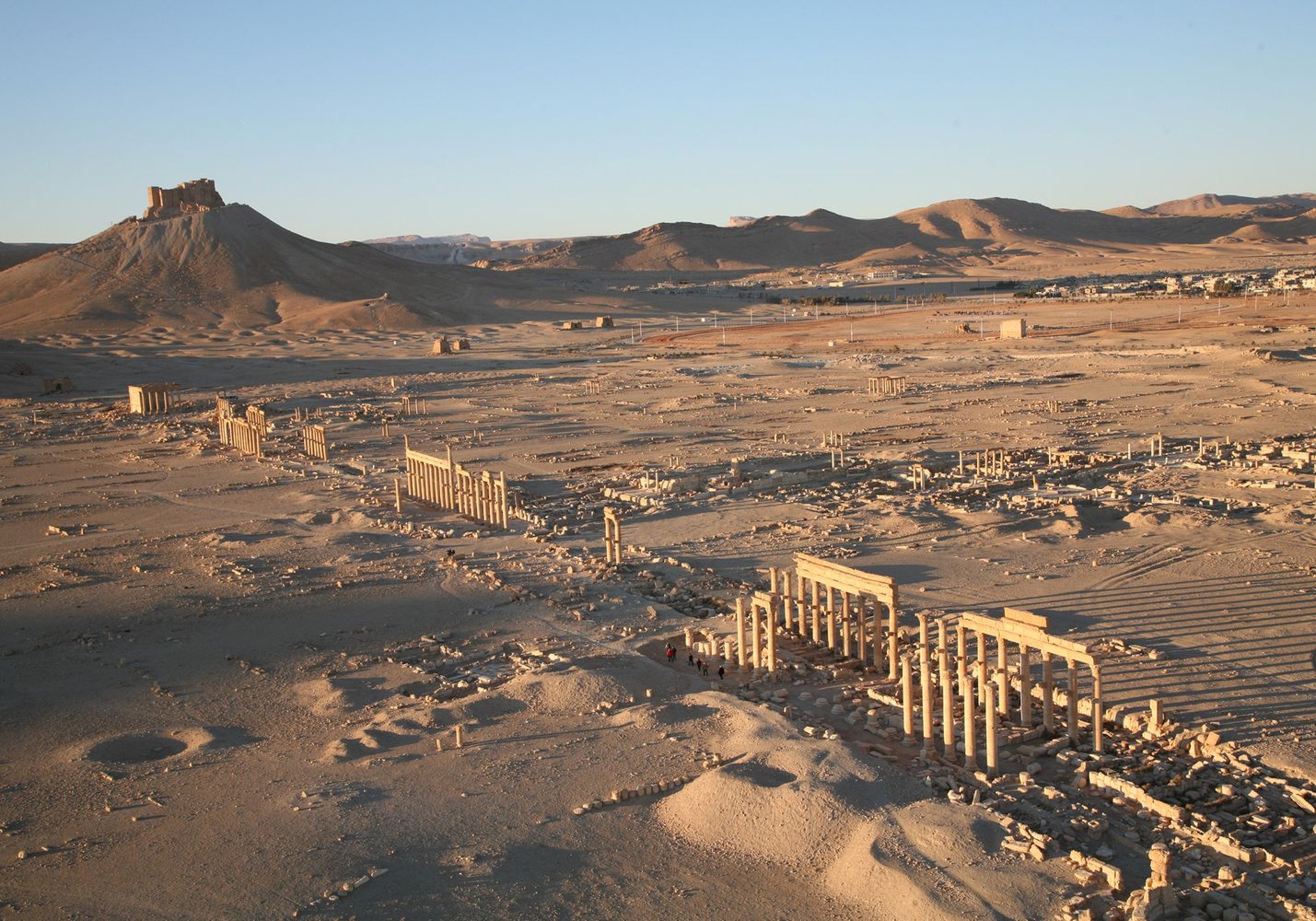- Accueil
- A Caravan City
- A caravan city
At the crossroads between Mesopotamia and the Mediterranean
In the heart of the Syrian steppe, Palmyra is halfway between the Levantine coast and the Euphrates valley. Its geographical position allows it to communicate easily with Mesopotamia to the east and with the Mediterranean to the west, through the "Homs Gap", a breach in the Syrian-Lebanese coastal chain.
Caravanners
Although the name of the city, Tadmor, appears as early as the nineteenth century B.C., it is not until the last centuries B.C. that its role in trade between the east and the west is assured, and it is in the first-thirteenth centuries that it reaches its peak.
The Palmyrenians, breeders of camels and horses, thus had the means of transport at their disposal; they knew the roads and water points, maintained relations with the tribes of the desert and with the Parthian empire, and, thanks to their armed militia, ensured the safety of the caravans.
A very extensive network
The Palmyrenians had trading posts in Mesopotamia, in the valleys of the Tigris (Seleucia) and the Euphrates (Babylon, Vologesias) or at the bottom of the Persian Gulf (Spasinou Charax, Phorath); some of them even owned ships that sailed as far as India.
Goods coming from all over the Indian Ocean, from Yemen to India, but also from China (silk), were brought near Palmyra in the caravanserais established to shelter the merchant caravans. These caravans did not enter the city because the municipal octroi tax was levied on all goods passing through it. The business was nevertheless discussed in the city, in the merchant agora. Merchants from the west and Palmyrenians concluded their contracts there before the products were distributed throughout the Mediterranean world.
